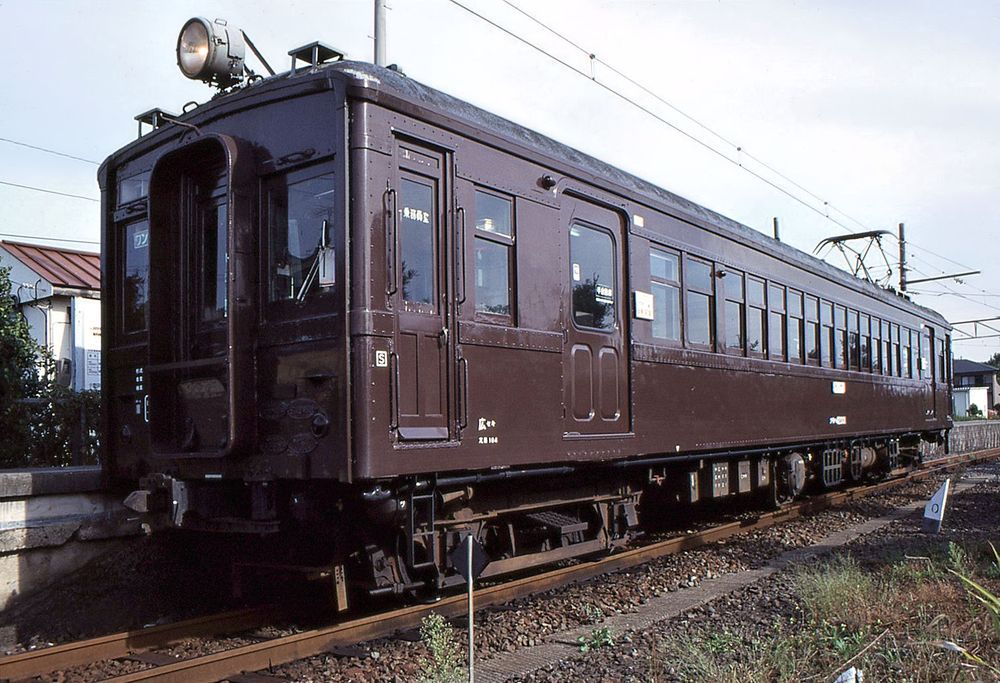Onoda-sen 小野田線, Nagato Motoyama-sen (長門本山線)

Single unit coach KUMOHA 123-3 coming off the Onoda-sen at Onoda station. (2015)

On the Nagato Motoyama branch. KUMOHA 42 001 of 1933 at Nagato Motoyama terminal. (2001)

The Onoda-sen branches off the San'yô Honsen in the town of Onoda, about 40 km east of Shimonoseki. First, it follows the Arihogawa river towards the sea and then cuts across the peninsula to reach the Onoda port area with its various factories and shipbuilding wharfs. From here it continues south to Suzumeda and then eastward to Inô, where the Onoda-sen joins the Ube-sen. The length of the line is 11, 6 km, but trains continue over the Ube-sen to Ube Shinkawa (1, 8 km).
The area has seen a succession of large-scale developments and industrialisation, followed by de-industrialisation. Whereas the Onoda-sen carried an average of 1478 passengers a day in 1987, the figure stands at around 460 passengers today.
Trains used to work coal and limestone from Onoda to Onoda Port, starting in 1915. The railway here was taken over by the state in 1943. The southern section between the Ube port area and Suzumeda, also opened in 1914/15, was electrically worked from 1929 onwards. The missing section between the Onoda port area and Suzumeda went into service in 1947, and in 1950 all lines in the region were electric (DC 1500 V). Large-scale reorganisation and rebuilding of rail connections up to 1952 resulted more or less in the layout of tracks we have today. Freight services ended in 1986. The line is at present worked by 10 stopping trains a day, most of them in the morning and evening.
The branch from Suzumeda to Nagato Motoyama (2, 3 km) began operating in 1937; it was originally electrified with 600 V, the same as the lines around Ube port. After the establishment of the JR companies in 1987 this branch became famous as the last line on which JR still used old-type motor coaches with nose-suspension drive. The very last such car, class KUMOHA 42 no. 001 was withdrawn in March 2003. (Class 42 cars were built 1933-1935 and had a comfortable cross-seat interior.) 42 001 has been preserved but is not in running order. Today, class 123 single units work the Nagato Motoyama branch, but there are only 3 trains a day left (2 in the morning, of which one works through from Ube Shinkawa, and 1 in the evening, also to and from Ube Shinkawa). This contrasts with the 11 to 12 trains indicated in the timetable of 1997.

Single unit KUMOHA 123-3 reflected in the mirror at Mede, alongside the river south of Onoda. (2015)

From motor coach KUMOHA 123-3 after leaving Minami Nakagawa for Inô and Ube Shinkawa. Note the tsunami warning! (2015)

Approaching Minami Onoda halt. Ship building cranes in the background. (2015)

Shipbuilding in Onoda. Seen from the train. (2015)

From the train near the port of Onoda. (2015)

Before arriving at Inô and from there continuing over the Ube-sen to Ube Shinkawa the train crosses the Kotôgawa River. (2015)

Single unit motor coach KUMOHA 123-6 (with a luggage compartment) waiting at Ube Shinkawa for a trip via Inô and the Onoda-sen to Onoda. (2015)

Suzumeda station, with an Onoda-sen train (class 105, no.15) on the right, and the single coach KUMOHA 42 001 waiting to depart for Nagato Motoyama on the left. (2001)

KUMOHA 42 001 of 1933 at Suzumeda. (2001)

From the train (KUMOHA 42 001) at Hamagôchi, the only intermediate stop between Suzumeda and Nagato Motoyama. (2001)

